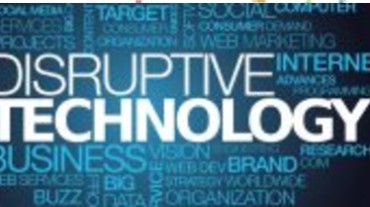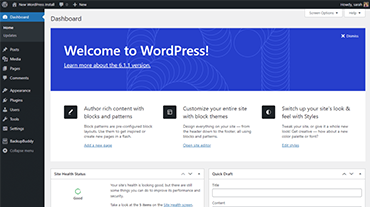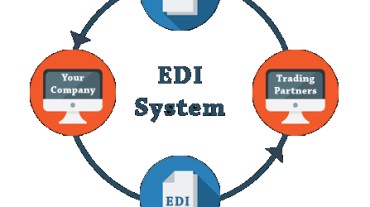How do you understand Disruptive Technologies?
We live in a world where cellphones are more accessible than a tooth brush. More and more people are turning to the digital world to know about the world, friends and their own identity. Are there disruptive technologies that has the potential to disrupt technology for modern day missions? Lets look at this a little deeper!
What is a disruptive technology? Harvard Business School professor Clayton M. Christensen coined the termdisruptive technology. In his best-selling book, “The Innovator’s Dilemma,” Christensen separates new technology into two categories: sustaining and disruptive. Sustaining technology relies on incremental improvements to an already established technology. Disruptive technology lacks refinement, often has performance problems because it is new, appeals to a limited audience, and may not yet have a proven practical application. (Such was the case with Alexander Graham Bell’s “electrical speech machine,” which we now call the telephone.)
It is said like this Disrupt or be disrupted. This is a challenge to the existing technology that we use in modern day missions. We need to start critiquing the already sustaining technologies and start looking at disruptive technologies that have potential to successfully drive and enhance technology methods in missions. Disruptive technology in missions is good as it challenges us to explore how some of the things can be changed and/or replaced. We will need to look at technologies such as social media, mobile, analytics and cloud based technologies (SMAC) to provide anytime anywhere predictive and contextual insights. Many a times a new disruptive model kills the existing model or product. And we need to be aware that the new disruptive technology might not be showing immediate results yet but definitely can pick up the momentum at some point in time later.
Lets look at some of the disruptive technology that changed our way of life. The personal computer (PC) displaced the typewriter and forever changed the way we work and communicate. TheWindows OSwhich was affordable and the user-friendly interface was instrumental in the rapid development of the personal computing industry in the 1990s.Personal computing disrupted the television industry, as well as a great number of other activities.Emailtransformed the way we communicating, largely displacing letter-writing and disrupting the postal and greeting card industries.Cell phonesmade it possible for people to call us anywhere and disrupted the telecom industry. Thelaptop computerandmobile computingmade a mobile workforce possible and made it possible for people to connect to corporate networks and collaborate from anywhere. In many organizations, laptops replaced desktops.Smartphoneslargely replacedcell phonesandPDAsand, because of the available apps, also disrupted pocket cameras, MP3 players, calculators andGPS devices, among many other possibilities. For some mobile users, smartphones often replace laptops. Others prefer atablet. Cloud computinghas been a hugely disruptive technology in the business world, displacing many resources that would conventionally have been located in-house or provided as a traditionally hosted service.Social networkinghas had a major impact on the way we communicate and — especially for personal use — disrupting telephone, email, instant messaging and event planning.
Talking a bit about Cloud Computing and how its been disruptive in many a ways especially braking the mould of the conventional in house developed/hosted software, platform or infrastructure. We see that cloud services has been able to successfully address these with IaaS, PaaS & SaaS. Infrastructure as Service (IaaS) is the most flexiblecloud computing model and allows for automated deployment of servers, processing power, storage, and networking on the cloud without the headaches of managing and maintaining the infrastructure. IaaS clients have true control over their infrastructure than users of PaaS or SaaS services. Platform as Service (Paas) is a category ofcloud computing servicesthat provides aplatformallowing customers to develop, run, and manageweb applicationswithout the complexity of building and maintaining the infrastructure typically associated with developing and launching an app. Software as a serviceis asoftwarelicensinganddeliverymodel in which software is licensed on asubscriptionbasis and is centrallyhosted.It is sometimes referred to as “on-demand software”. SaaS is typically accessed byusersusing athin clientvia aweb browser. SaaS has become a common delivery model for many business applications, including office and messaging software, payroll processing software, DBMS software, management software, CAD software, development software,gamification,virtualization,accounting,collaboration, customer relationship management(CRM),management information systems(MIS),enterprise resource planning(ERP), invoicing,human resource management(HRM),talent acquisition,content management(CM),antivirus software, and service desk management. SaaS has been incorporated into the strategy of all leadingenterprise softwarecompanies. One of the biggest selling points for these companies is the potential to reduce IT support costs by outsourcing hardware and software maintenance and support to the SaaS provider.
If you look at the diagram above you can clearly see how each of these models work as well as managed. Christian ministries should be seriously thinking of migrating from the age old legacy systems and inhouse developed and maintained software systems to the one on the cloud though it has to be researched and intelligently chosen as to which one is the best.How can technology aid in impacting missions at large? Take for example a bunch of techies who wanted to do something to impact the Kingdom work! They started to understand the working of the #hashtags on the social networking sites. They started to search and intercept the tags online where human traffickers were sending #hashtags to locations where they procuring people. By this there were able to divert the messages as well as be able to alert the right people who can avert this operation.HashTags are used by people with a hashtagsymbol # before a relevant keyword or phrase (no spaces) in their Tweet to categorize those Tweets and help them show more easily in twitter or any social media searches. Clicking on a hash tagged word in any message shows you all other Tweets marked with that keyword. This is one of the great ways to use technology to serve and do the kingdom work. There are many such examples where people with specific skills can come and add great value to the digital world.The other examples of using digital media and technology for the advancement of the kingdom is to collaborate and network with various kinds and types of people who can add value to the missions world. There are network groups whose purpose is to bring collaboration and network with like-minded people. We have leaders who can cast vision and inspire ideas and thoughts. Then we have specialists who can make that idea or vision into a reality and then we generalists who can actually see the ideas implemented on the ground.
Seth Godin says, “Any useful technology that’s successfully adopted by a culture won’t be abandoned. Ever. (Except by top-down force). The technology might be replaced by a better alternative, but society doesn’t go backwards. After books were accepted, few went back to scrolls. After air conditioning is installed, it’s never uninstalled.
As Kevin Kelly has pointed out, technology creates more technology, and this, combined with the ratchet (meaning a situation or process that is perceived to be changing in a series of irreversible steps) has a transformative effect. In a corollary to this, some technologies, once adopted, create their own demand cycles. A little electricity creates a demand for more electricity. A little bandwidth creates a demand for more bandwidth.Its hard to imagine that discrimination on race will return to apartheid-like levels, that marriage will return to being an exclusionary practice… once a social justice is embraced by a culture, it’s rarely abandoned.”
Keeping this in mind we need to understand that some technology invention will only give rise to better technologies and that it cannot be replaced but only increase in demand. So we cannot be too worried about disruptions however be cautious about the current technology getting disrupted and we are caught off guard! If we stick to the age old methods and suddenly there is disruptions with newer methods then most of the time we are caught by surprise and tend to heavily lose if we have not expected that impact. If not anticipated or expected and if we have invested much then the impact on that organization is very huge. Therefore we need to be on the lookout and proactive to evaluate and bring those technology models that have greater potential to disrupt the way we do things. Like the phrase disrupt or be disrupted. It is imperative that we are constantly critiquing our methods and models especially if we plan to invest a large sum of money for our current or future mission goals. I agree that we need all kinds of methods and use of technology in missions however it is important that we invest in the technology solutions team or the R&D team is consistently evaluating the current and future trends that can impact the way we use technology.
If you look at the innovation adoption lifecycle and primarily in adoption of innovative technology in missions you can see that the innovators and early adopters are mostly less than 16%. Then the early majority make up the rest 34%. Then the late majority and the laggards make up the about the remaining 50%. A mesh of blurred technology is upon us today, and we can take advantage of these new opportunities if we can read viable trends early and act in an expedited manner.
– Text to give where using tools such as kindrid donors can give right from their cell phones
– Instagram is one of the most popular social networks for photos and videos. Instagram allows for videos up to 15 seconds, so with a little creativity, you can easily promote your churchs events right on your congregations newsfeed.If we look at the secular world the new breed of companies that are the fastest-growing in history. Uber, Instacart, Alibaba, Airbnb, Seamless, Twitter, WhatsApp, Facebook, Google: These companies are indescribably thin layers that sit on top of vast supply systems (where the costs are) and interface with a huge number of people (where the money is).What exactly does that look like? Uber, the worlds largest taxi company, owns no vehicles.
Facebook, the worlds most popular media owner, creates no content.
Alibaba, the most valuable retailer, has no inventory.
Airbnb, the worlds largest accommodation provider, owns no real estate.
Skype, WeChat the largest phone companies own no telco infra.
SocietyOne, the fastest growing banks have no actual money.
Netflix, Worlds largest movie house own no cinemas.
Apple & Google, Largest software vendors dont write the apps.
Something interesting is happening.
Yes, something interesting is happening, and it is causing companies to rethink how they are doing business. Customers are embracing mobile and digital channels more and more each year, and to be successful, companies must deliver customer engagement via those channels. To personalize the customer experience and delivertimely, relevant offers that maximize customer profitability and loyalty, companies must be data-driven.
When we look at the future big data, mobility, cloud computing and social media will account for greater growth. The combination of these four technologies (SMAC) will lead to a technology revolution, positioning technology as a commodity, like electricity. The cloud will be used for both B2C and B2B business. New business models will come up. IT will become agile gearing up and becoming scalable in days, rather than weeks and months. The future will be about IT-led, cloud-led data services.Now where does that leave mission organizations and more specifically how we/they do missions? Are we looking at our organizations in the light of these possible disruptions that are happening around us? How much of what we currently do can be possible disrupted? Disruptive technology was feared in the industry long before the term came into being. Successful organizations focus on what is important and critical to the end user, creating and adhering to detailed steps deemed necessary to create real value while eliminating those that do not.Disruptions have happened in the past and will continue to happen even today. We cannot be unduly worried about disruptions but we sensitive to the changes and innovations in the modern times. If we or our innovations team dont look at things as early adopters then we will be late in adopting or will be left behind. Sometime the disruptions can hit so hard that it can break the very core of what we have started the organziation or even stood for. So lets not forget the goal that the mission and vision of the organziation does not change however we are constantly evaluating the tools and methods we use to impact.





